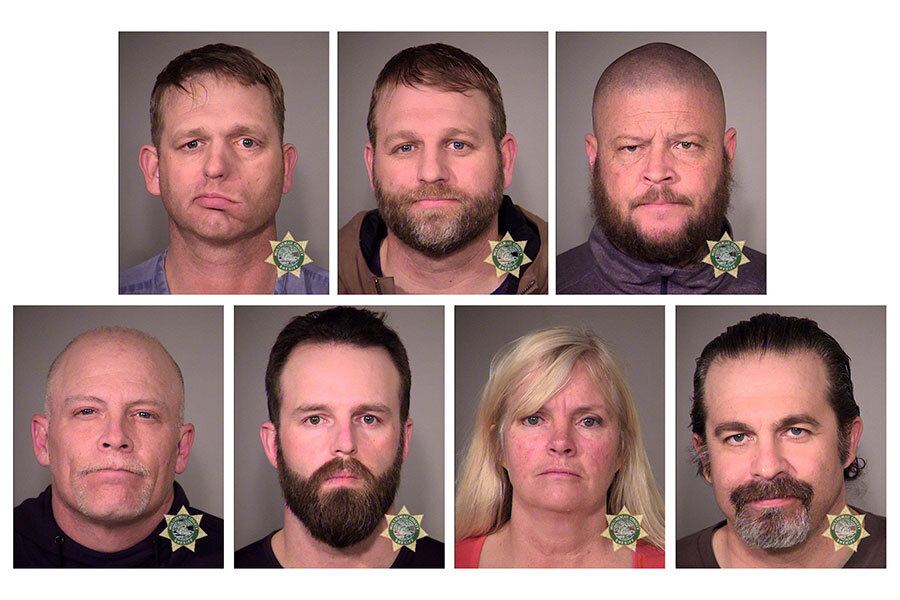Was that Oregon wildlife refuge occupation a legitimate protest?
Seven protesters involved in the armed occupation of Oregon’s Malheur National Wildlife Refuge to protest the federal government’s land use earlier this year went on trial Tuesday. All seven are accused of conspiring to impede Interior Department employees from doing their jobs, while five face the additional charge of possession of a firearm in a federal facility.
Prosecutor Geoffrey Barrow is expected tol form his case around how the occupiers were trained and drilled to establish patrols that prevented federal employees from going to work. While attorneys for the defendants have not yet made his opening statements, protesters have argued that their occupation was a legal expression of First Amendment rights on an issue that has affected many Western states for years.
"Everyone in this great nation has a right to his or her beliefs,” Mr. Barrow told jurors in his opening statement. “We are not prosecuting the defendants because we don't like what they think or said. We are prosecuting them because of what they did."
The occupation began on January 2, following the imprisonment to of two Oregon ranchers who had set fires that spread to nearby federal property, as a protest against what they saw as illegal control and mismanagement of public lands by the federal government.
But over the course of the 41 days the protesters remained at the Malheur National Wildlife Refuge, their cause become less about the ranchers and more about demanding that the government turn over public land to local control.
"Federal control of public lands in the West is destroying the rural way of life, and that is what my client and others were trying to draw attention to,” Matthew Schindler, a lawyer for Kenneth Medenbach, charged with theft of a government-owned Ford F-350 truck, told Reuters.
Two of the seven protesters on trial are brothers Ammon and Ryan Bundy, who belong to a Nevada ranching family that has been embroiled in conflicts over land use for years. And they aren’t the only ones. Some Western ranchers take issue with how much land the federal government owns – more than 630 million acres – as well as its system of leasing it for ranching and agricultural use.
“If there is ever to be some ‘repatriation’ of public lands to Western states to own and control, it ... needs the participation of state and national public officials, not simply a few families grabbing and holding land that belongs to all Americans," Elizabeth Sanders, who teaches government at Cornell University, told USA Today. "The ‘Bundy principle’ is anarchy, theft of public land and resources."
The government did not rush to address the issue of the protesters when the occupation was going on, forcing Oregon Gov. Kate Brown to write a letter to the US Attorney General Loretta Lynch and FBI Director James Comey asking for a safe and quick end to the conflict.
But while the federal government did not immediately take action against the protesters, it has not lent them their sympathies either. So far, the protesters’ message has failed to translate into policy change.
"In terms of public land affairs, it's been business as usual," Bruce Huber, a Notre Dame law professor who specializes in natural resources, told USA Today. "[The Bureau of Land Management] has given no indication that they intend to pursue gentler policies with respect to public lands ranchers. And in other areas of land management, most notably federal coal leasing, the BLM has not shied away from taking positions that make it very unpopular in the rural West."
Material from the Associated Press and Reuters contributed to this report.







